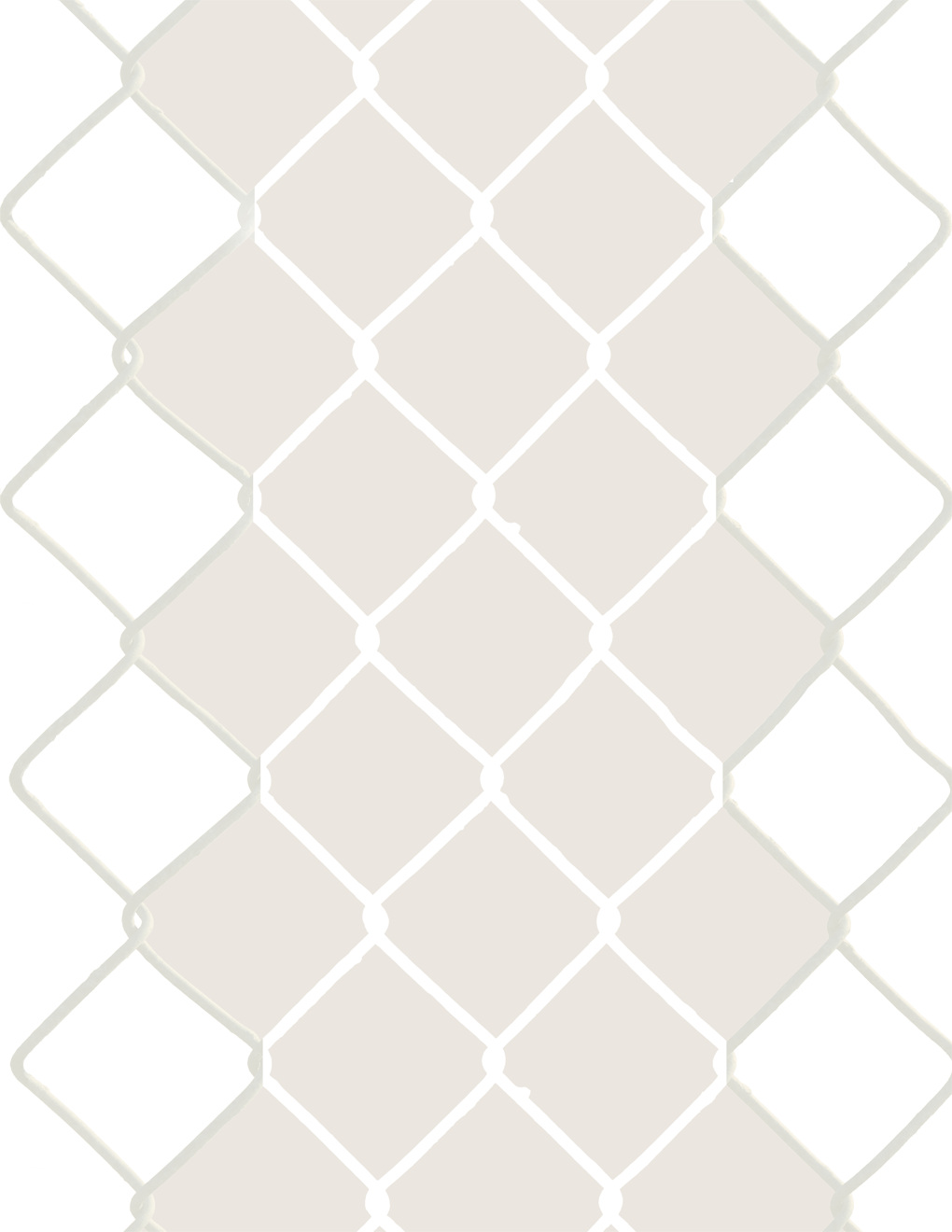In July 2015, The Cranbrook Art Museum [Detroit, MI] hosted a series of Dance Labs initiated by artist Nick Cave. The Labs provided research opportunities for guest choreographers to work with Cave’s soundsuits and develop dances for Nick Cave Here Hear (20 June - 11 October 2015), a citywide, site-specific performance program. Haleem ‘Stringz’ Rasul, Marcus White and Biba Bell participated in the Labs and recently sat-down to revisit the experience. Under a very compressed time frame, The Soundsuits were sent to the Museum of Contemporary Art Detroit (MOCAD) in early July where the choreographers opened the boxes to see their soundsuit assignments—at which point they had a week to develop their work. The project pitched a diverse group of dance artists into a similar situation of experimentation and observing process as it relates to the larger goal of rejuvenating and celebrating Detroit’s cultural scene.
October 10, 2015
Biba Bell: It’s been such a process working with the Nick Cave Project. I was really excited by the focus it had on dance and performance as central to a lot of the events. But there wasn’t a whole lot of language or conversation with the dance artists that were invited in the project. It was mainly focused on him. I guess the easiest thing would be to start at the beginning and talk about the Dance Labs and that week and how it was for you.
Haleem ‘Stringz’ Rasul: I’ll let you start, Marcus.
Marcus White: Okay! [laughs] Dance Lab number one. The process was very accelerated. That’s the nature of the Dance Lab. It’s very interesting in how this project brings so many different artists and organizations together who may have not necessarily have worked together. I had cultivated a relationship with the Ruth Ellis Center and MOCAD (Museum of Contemporary Art Detroit) prior to this project, and it was exciting to see how these groups came together under the auspices of the Nick Cave project, in addition to the support from Cranbrook. I think the most riveting or exciting part of this entire project, aside from artists and the organizations supporting this event, was the sheer number of people who came to the labs. The Ruth Ellis Center was unique as it was an indoor venue, so they had an audience cap. Thinking about performance, specifically dance performance or performance with movement at the center in the city of Detroit, those numbers, in my experience of being here, simply haven’t matched that. And it was consistent; it constantly had those numbers. I think the sheer numbers and their consistency has a large part to do with the support the Dance Labs received from the arts institutions and organizations, in addition to the artists that were featured.
| figure 1 |
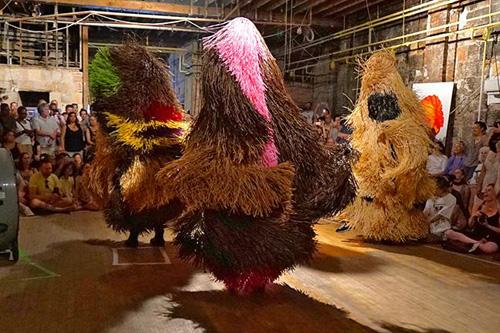 |
| choreography: Marcus White, photo: Jeff Cancelosi |
Also there were so many artists who were supported by this project, I think was just tremendous. To answer the question of how it was supporting my own creative practice—it was great to work at the intersection of visual art, performance and movement performance, particularly in thinking about art making practice in Detroit now. That was a beautiful thing to have that—to work with artists, to work with people, within the city, and to be connected. Those were the two major points that I took away from that. Certainly, there were other lessons learned—
BB: What was your week like? Your rehearsals, and working at MOCAD? Opening the box?
MW: Yeah! Opening the box was exciting. I first found out about the Dance Lab, mind you, two weeks prior to the Dance Lab actually starting. So we opened the box, and we had huge, tall raffia soundsuits that we had seen before but we had never really worked with before, never really lived inside them before. That was very exciting. Each eight-foot long soundsuit had an adjustable frame that went with the soundsuit. The long, billowy art of Nick Cave’s creations created many opportunities for you. We had to move in them, they made these swishing sounds as we moved all throughout the space. There were also two shirts that were of the same material, and our legs were exposed with those. We ended up calling the tall ones ‘tallies’, and the short ones ‘shorties.’
| figure 2 |
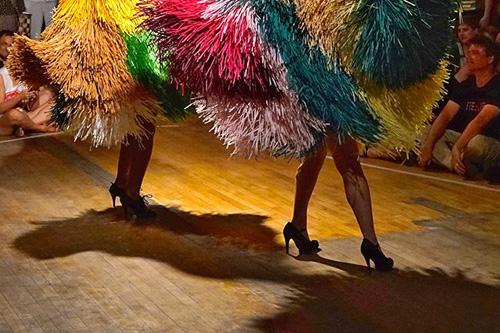 |
| choreography: Marcus White, photo: Jeff Cancelosi |
BB: And the shorties had the heels.
MW: Yes, the shorties had the heels. They came later because we were thinking with the legs exposed, what do we do with that?
Another experience that was very good at MOCAD was that it was an open rehearsal in that we were able to engage with visitors at MOCAD. A little kid just came up and started dancing. For me, that was beautiful. It was beautiful to see people interact with the soundsuits and wanting to be a part of the experience, and how Nick Cave’s creation was being witnessed in live performance. I’ve always been interested in knowing if people came to both open rehearsals and the performance. I was curious what changed for them, what shifted for them from the creation process to the performance.
BB: Do you feel like the fact that you had such a short amount of time (two and a half weeks) was a hindrance or a strength because the process itself was so sped up and intensive? In a way, I’ve found it’s quite difficult to prepare for something when so many of the elements are unknowns.
MW: I think the most challenging thing with the short time was finding the bodies who were willing and able to go to the labs. That was the biggest challenge of having it so late. Unfortunately, we didn’t have the opportunity for our entire cast to go to see the soundsuits in the Nick Cave exhibition together. Seeing that exhibition really shifted my thinking as I was entering into Nick Cave’s world, the breadth of his work was important to witness and to see. Then I needed to figure out for myself how the experience in the soundsuit connected to everything else that he is doing, all of his other work, and how it deals with identity, social issues, thinking about his work as becoming, transforming. Also very specific themes that I was working with in my own creative work—thinking about celebration of life, celebration of the individual within the context of a group. All of those ideas resonated with me.
| figure 3 |
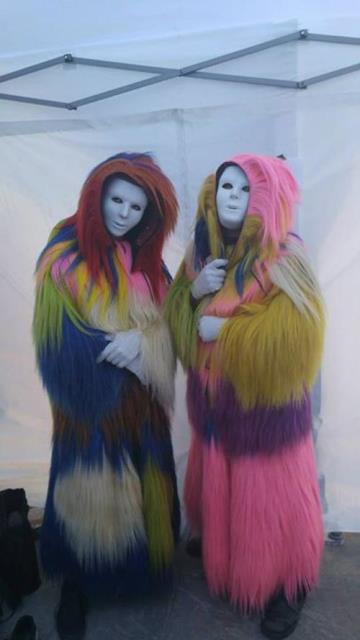 |
| Hardcore Detroit, Dance Lab, photo: courtesy of the Right Brothers films |
BB: Haleem, what was your Dance Lab week like?
HR: My experience with the lab, if I had to say a word, at the beginning it was very vague. I didn’t know Nick Cave’s work at all. I was coming into it kind of blind. And I liked that because they were really focusing on a box—you’re going to come in during this week, and that’s when everything begins. That’s when the process begins. So I thought that was cool. I’m going to enter it blind. We’re going to go to MOCAD and open up the boxes. They gave us a range: there could be nothing in the box, there could be one thing in the box, there could be many things in the box. When we did finally make it to day one, I think we only had three days if I’m not mistaken. One of our days got cut.
BB: Wow, that’s short!
HR: Yeah! And they were working and collaborating with the live instruments, so it was really crazy. I know my dance team but I felt like, in order to get things done in a short amount of time, I had to conduct with the musicians [Odu Afrobeat Orchestra] in a way, as far as the work process. I didn’t want to do that! I wanted to be open-ended. Also considering the type of style we are known for, and the reason why they might’ve selected our group. They want us to do us; you know what I’m saying? I did have to explore to see that range of possibility. That was the first thing that we did. I said, OK, let’s just try the suits on and just see a range of movements and what we normally would do. And then the music, I would say play something, and we’ll see what comes. That was the initial phase of the process and then it started to build from there. I’ve worked with other groups like The Hinterlands, and I’ve found that how they worked on a particular project would work best for this. We would explore on our own and then improvise and have people take mental notes of things that might happen inside of this improvisational period. Then we would discuss it afterwards and try to find relationships and meaning and put something together based of that. That worked out.
BB: I’m interested in the structures of limitations. One, that the suits introduced but also the whole lab structure: with the short time period, being curated with a composer, with a music group. I mean, I had never worked with Frank Paul before. And to have this situation where we are being asked ultimately to cut it from the cloth. You can’t really come in with some preconceived… and that’s not the point, it’s a lab. It’s very much about the experimental, open quality of exploring what comes.
Back to the suits: we had two suits and then we had this long, orange and black cloth with holes in them where people’s limbs could intersect. It became this kind of Möbius-like wraparound costume for five different dancers that they wore simultaneously. The cloth really threw me for a loop since I did have familiarity with Nick’s prior work. We spent two rehearsal days just trying to figure out what to do with it. Marcus, you had the eight foot tall tallies?
MW: Yeah.
BB: About the movement style... I haven’t worn the hair suits, Haleem, that you guys were wearing, but some of my students did for the Heard performance, and I helped them dress and they were heavy and hot! I’m curious, was there a new kind of movement vocabulary that emerged because of the limitations that was surprising? We come at it with what we know…it’s almost like the suit itself becomes a partner. Like a duet that influences the movement of the body. I’m curious how you two might’ve related with that.
MW: Being in the sound suits definitely transformed the way we were able to move. Again, we had these A-frames that were on top of our shoulders. So a lot of the movement we could do is already shifted. For instance, we would need another person to help us get back up from the floor because it took our center of balance off. The movement vocabulary that we were drawing from was contemporary dance and also what I call black queer movement performance, which includes vogue and waacking. I had this ephiphany, Oh waacking! The motion of waaking would look great in these billowy soundsuits! I was interested in how the movement would read in the suits. But sometimes it didn’t read. The clarity of the movement and the gesture didn’t read in the soundsuit. Even though, conceptually, if it was in the fleshy body it would definitely read. And so we had to transform and mold the movement. We also had to figure out what the sound suits asked of us and what they needed. That was critical and that was something we could only do in the soundsuits. We were in the sound suits and we just sat in them!
I was excited to collaborate with John Collins, who is an amazing DJ and founding member of Underground Resistance. It was interesting how the electronic sounds of the techno music layered on top of the sounds that the sound suits were making. That pulse, that heartbeat, served as a driving force to the process when we were working together.
BB: It seems, at least in our experiences spending time in the soundsuits individually, they really did produce their own senses of rhythm. Rhythm was such a strange thing to experience with the suit on. It was such a different inflection of rhythm—the way it corresponded to the rhythms the bodies were producing—the way they get pushed and shifted and elongated—the rhythms were very interesting. What about for you Haleem? How did it push your movement vocabulary?
HR: Yeah, the same type of issues that you guys had with movement not reading. We didn’t have mirrors, we requested mirrors, because we knew that would be very important, but we never got them. So we had to rely on our own take.
| figure 4 |
 |
| choreography: Hardcore Detroit, photo: Jeff Cancelosi |
But for me, personally, I felt like I had to do movements bigger to really make it read. There were certain things I just couldn’t do. Backstage, at the main event at the Masonic Temple, we did have a mirror. So up until the very end, I was tailoring things and selecting which things look best. I made my own vocabulary of what movements worked best considering the music. I’m pretty sure everybody else did. Our Dance Lab focused on improv, so people were doing their own thing, but we did have two sections where people came together on some things and I thought read pretty well. I chose a house dance style, real flowy, simple movement that different body types.
MW: I agree, it did read well!
BB: Yeah!
MW: Biba, you opened up thinking about language of performance, language of dance. Haleem, you mentioned film as a tool to look back at the process and what you’re creating. And also photography, there were these images that were taken out of the Dance Labs. Seeing that film, seeing the photos, maybe being outside of the process. How did you guys devise or shape the work? Because for me, being on the inside of the sound suits, I had to rely heavily on film and photos to think about how are these sound suits reading? Because you’re doing movement outside of yourself, in yourself, in your body, that’s one thing. But then you’re putting on this soundsuit—they’re gigantic! We had these billowy sound suits that we were working with. I had this really serious conversation about scale. These sound suits were terrifying! Once they get really ruffled up, these raffia soundsuits, they can be almost terrifying. I want to know, that outside eye, how you guys shaped that work for yourself.
| figure 5 |
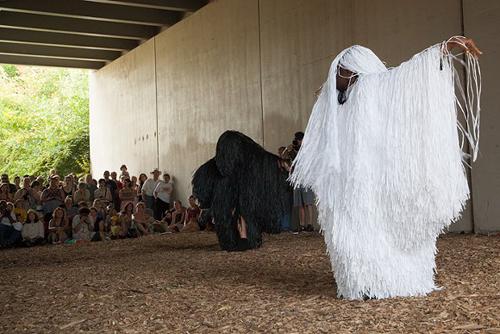 |
| Sam Horning and Ta’Rajee Omar, choreography: Biba Bell, photo: PD Rearick |
BB: I tried to pace the rehearsals. And I really tried to keep it open and figure out, like you said,
Haleem: the dancers, we take mental notes, We talk about what we see, what is emerging and how we can make it more of what it is. That’s always one of the things I try to do when I’m making work. What is it trying to tell me and how do I make it more of what it is? But the last couple days it really is about producing something.
There was so much documentation, which, in some ways, I found helpful but in some ways difficult. Everything felt very raw and I didn’t necessarily like what I was seeing in the photographs. I’m not ready to show something. The open rehearsal was awesome, I love that, and I like doing that anyway. That’s a process I’m very interested in. But in terms of the proliferation of images and media, that’s something I like to be in control of or have more control over, so that was challenging for me! It also forced me to address, as an artist, as an individual, being invited into the project, that that is also more about the larger frame within which I’m working. In addition to my work, but really it’s about that. But at the same time, the multiplicity of all of those images—just think about after the performance at the Dequindre Cut, there was a sort of rainstorm on social media. The thing that was so neat about the events that they were out in different kinds of environments, which creates this really diverse multiplicity of perspectives for the public. Like what you said, Marcus, that it was a real diverse crew that were producing this thing. So that reflected that. But it’s hard to be inside of an immersive suit and then also come out and try to be a choreographic or directorial eye.
| figure 6 |
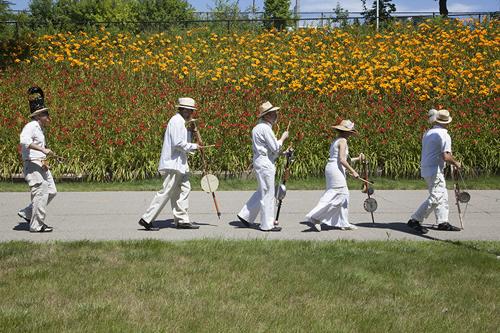 |
Frank Pahl music procession, photo: PD Rearick |
MW: Well, yeah. But aside from that, you had people who were coming to these events from diverse walks of life. These Nick Cave events became a meeting point to exchange cultural ideas. You see groups of people coming together that you never would’ve seen, and I think that was a beautiful thing.
Also, the visibility of performance, of dance. Dance as central. I think it’s crucial to think of this shift, and think about dance’s role within Detroit. Specifically thinking about dance’s role in Detroit’s resilience. How can we continue to integrate ourselves and support institutions that think about the needs of dance artists. What would it be like to have mirrors or a dance floor? How do we continue that momentum, to infiltrate, to continue the path that we are doing? I think it’s the biggest question I’m left with.
BB: You bring up something, Marcus, that is a conversation in dance and performance also outside of Detroit—what it means to be a performer, a choreographer or dancer working within a museum context, which is historically set up for a very different relationship to what the work is, how it’s exhibited, how it should be supported and maintained. It’s a hot topic. So, yeah, that question: What about the things that dance artists or people who are working in really physical modes? A dance floor! I brought that up and nobody had really thought of that. Oh, we might want a dance floor if we are going to be spending a week pounding away on the concrete floor of MOCAD. That kind of thing. It also brings this question that I am always ultimately asking: What is it that dance is doing or can do that is singular? What is it that it can bring to this project that would be missing without it?
Haleem, I’m real curious, because you said you weren’t real familiar with Nick’s work before doing the project and now I’m curious what your relationship to the work is.
HR: Now, I’m definitely a fan. I see what the hype is all about. I was curious just how the other outfits felt like. I kind of understand why we got the outfits we got as it does give us a little more range of movement, but I was curious what if we got the tallies. You know what I’m saying? How our approach would have been. And I always personally thought the other outfits were cooler than ours.
| figure 7 |
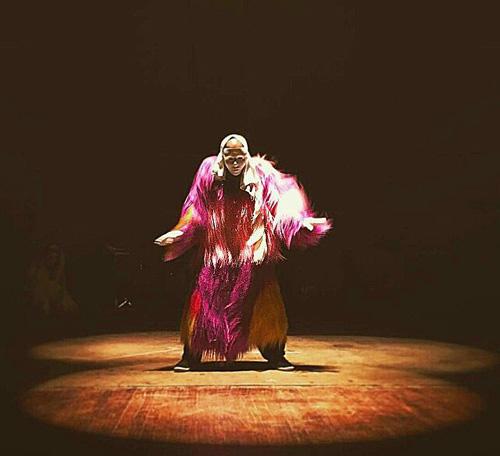 |
| choreography: Hardcore Detroit, photo: courtesy of the artist |
BB: Oh really? [laughs]
HR: Yeah, yeah. I was like man those are cooler outfits [laughs]. If we wanted to not use them we didn’t have to! But I still felt some obligation that we had to use the suits. It was common sense. But at the same time, we could accessorize and we did. We do a lot of performances and I’m used to doing performances and not having the adequate things necessary for us. So, I’m used to that. The floor might not be right for us or the music. We’re just used to it. But at the same time, it is frustrating. Why can’t we just have what we need? What is necessary for us? [all laugh]
MW: It’s also that dance is in the practice of making it work. We’ll figure it out whatever the situation. But there’s also the thing that if we had the support. If we’re really talking about supporting the idea. Amen to that, man, amen to that.
HR: Yeah.
BB: It’s also of educating. Just like our audiences, we also educate our producers and our curators and the people who are inviting us to do these things, to do these collaborative projects. I love that most of the work I’ve been engaged in the last ten years or so is not theater-based. I do really like performing in all sorts of different kinds of spaces that don’t have sprung floors or mirrors or those things. But it also in terms of thinking about the care and the time and the support, the people who are there to support all of the work, it makes such a difference to feel that that’s also happening for the dance component. Not to say I didn’t feel that, I did. I think that there was a real desire to say Okay, we don’t necessarily know what you need. What do you need? That kind of thing. But it definitely is challenging. It’s a new conversation with every institution, I’ve found. Especially when working within a visual art context, which is so much about production and exhibition but in a very different way. With a completely different history of relations to objects and bodies and all of that.
What about the political elements? The soundsuits really do have this relationship to political, police violence, to race, to identity, the history of them and that the first soundsuit that he made was post-Rodney King. That political, historical legacy that they, on some level, maintain. The soundsuits create this body-- almost like prosthetics-- at the same time that it’s an armor, a decoration, a celebration. The soundsuits are all of these things, simultaneously, and what it is to negotiate, to be vulnerable inside of that. I’m wondering if either of you feel like speaking to that angle of the work—also being the vulnerable dancers operating inside of the institution.
HR: You know, politically, I didn’t get that deep into it. For me, it was just so much going on that I can’t even… I don’t think I could even make it to that layer. But, I mean, sure, certain things represent things all the time in art. It depends on the take and the direction of the choreographers and their intent behind certain things. But, for me, it just wasn’t—I didn’t really get that deep into it, but I’m not sure about my other dancers, what they’re feeling.
BB: Fair enough. We had plenty on our plates.
MW: Even though we intentionally may not create political work… I feel like there was a lot of politics going on at that stage at the Masonic Temple. As an outside observer watching you guys and your dance labs—watching that experience, there’s a lot of good stuff in the work that you guys were producing, regardless if we understood if it was politically or socially charged. For instance, Biba, there was a moment in your work where you had the raffia soundsuits facing and mirroring two of the dancers who were not in the soundsuits. That gesture of the mirroring was, in my mind, a very intentional nod or idea to thinking about this vulnerable state of the performer. That was one of the most striking and powerful moments in the work. They literally transformed, which is a theme from Nick’s work.
| figure 8 |
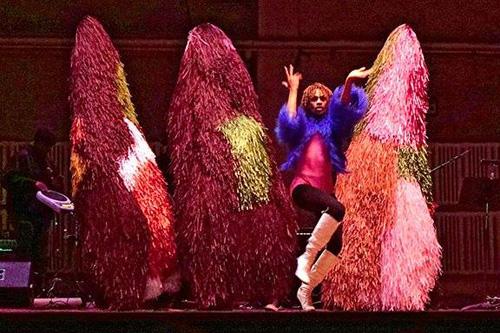 |
choreography: Marcus White, photo: Jeff Cancelosi |
And then, Haleem, with your work, the idea of improvisation as a tool for empowerment resonated with me, particularly because of your choices theatrically, like with the lighting and the impact of having all of these brown bodies on the stage. Then, there were some instances where we didn’t know the identity of the dancers. But there was something about how the dancer moved and “hit” that movement that I knew there was some Blackness going on that I think was very interesting and I think that was very striking from the outside looking in. It was very interesting to find that lineage between the movement styles you were drawing on from the American context, with your freestyle, with the breaking, with the house, with the jit, or with the footwork, juxtaposed with this African, Afro-inspired sound. There was this lineage being made that I was just like, Wow! Haleem, this is really good!! And those two things coming together that really made me think of black uplift, thinking about celebration of blackness in a very specific way. There were other things going on in there, too. For sure, there was this Afro-diaspora thing that was happening.
| figure 9 |
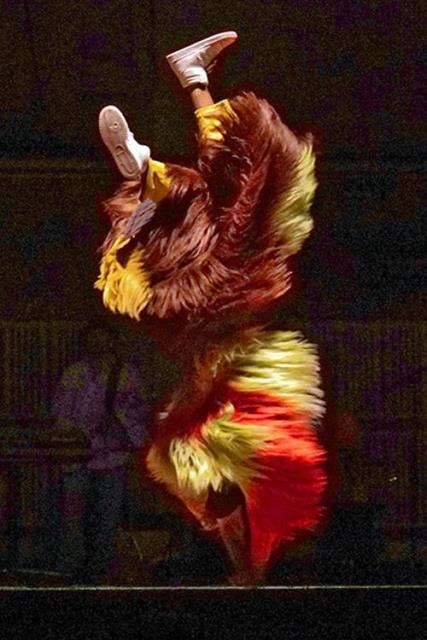 |
| choreography: Hardcore Detroit, photo: Jeff Cancelosi |
There’s something also about being in Detroit. Speaking to my work a little bit, I was excited to make connections between the space of our Dance Lab and what types of themes and ideas come from that. I chose to celebrate black, queer movement performance, waacking and vogue, because of the site. The Ruth Ellis Center is an amazing center for homeless LGBT youth. They’re opening a health center for LGBT youth, young people in Detroit in the coming years. They’re doing a lot of amazing work. So, in this project, I needed to draw on black-queer movement vocabulary as a celebration of the community that Ruth Ellis serves-- not in the sense that I expect everyone to be black and queer but in the sense of highlighting tthat and understanding and celebrating the gift of that movement. How did you guys, being at the Dequindre Cut and being at Campus Martius, how did that shift for you? How did that shift your approach to the work?
HW: By the way, man, you’d be a good PR person, especially for me, with that [all laugh]. My choice to decide to put jit into our performance-- that’s a political move. But as far as the difference with the location and the environment, you know, when we were outside, the first time, definitely the suits weren’t as hot. [laughs]
BB: Under the theater lights I bet they got real hot.
HW: Definitely. The show wasn’t perfect. It wasn’t even solid. There were issues; you know what I’m saying? The whole process for me, I guess. But, like you say, the show must go on.
BB: The show must go on. For me, working in the Dequindre Cut—a walking, bike path with a really open, long perspective and unclear demarcation of where the public will be and where the performance will take place. I tried to really take the site into account in terms of setting the piece, which actually made it super difficult to then set it on the proscenium, because the whole performance was made for a space the size of a football field. Also, I knew a lot of the performance, except for the last part when we all come and dance together, a lot of the performers were really within the audience, you know? There was this real mixing of the public and the performers to the extent that the soundsuits would touch them and they would move out of the way and became this really porous relationship between the viewer and the performer on the one hand and then on the other hand. Then I, on the other hand, had to really think about different perspectives, multiple perspectives people could have simultaneously because everyone had a really different experience of the performance, seeing. All of the views were partial. A lot was missed because of the size. I think they said there were 1,100 or 1,200 people there, which was also really surprising at the time. But in a way, there was this sense of something happening around you and not being able to see it, but sense it, and sensing it through the audience, through all of the crowd, and then having these moments emerge—whether it’s the sounds of the music, the soundsuits themselves, or dancers becoming visible. People didn’t know which direction to look. I tried to sort of wield that, choreographically. That to me was one of the greatest things about it: that challenge, because it turned it from this performance as a discrete dance piece that I was being asked to make and opened it up into the frame of the event. I feel like that really was about the event. It was all the moments leading up and all the moments after. It busted open the frame a little bit, which really speaks to what you said, Marcus, you’re bringing all these different people together. And that, ultimately, was one of Nick’s goals with all of these events: the way in which it brings together this sense of community and identity and sense of belongingness in Detroit.
| figure 10 |
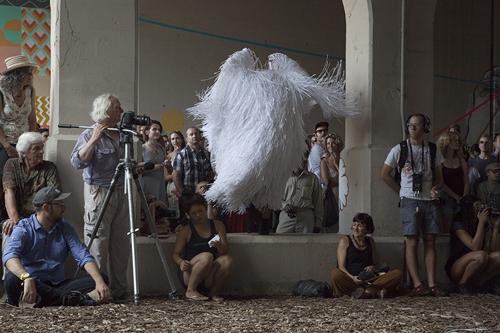 |
| Jordan Holland, choreography: Biba Bell, photo: PD Rearick |
Haleem “Stringz” Rasul discovered his passion for the arts at an early age. Growing up in Detroit came with its own unique challenges that served as motivators manifesting into his creative and business ventures following graduating from Western Michigan University in 2001. He established Hardcore Detroit as a brand dance company and fashion label. His motto “hardcore,” represents success after struggle and overcoming hardships to achieve victory. By 2010, Hardcore Detroit was voted best dance company in the Real Detroit Reader’s Poll.
He learned discipline through the trials of everyday life and the intense ridicule of b-boying’s only teacher: the cypher. Unlike modern jazz or ballet institutions, b-boying had no formal methods of instruction. Therefore, originality and perseverance became paramount and laid the groundwork for his trademark.
Described by the Chicago Tribune as “ingenious” and “vulnerable” Marcus White’s evocative dance works span across genre including commercial studio, musical theatre, concert dance, and street. His versatility in movement styles and inventions make him a sought after choreographer, teacher, and screen dance artist. His work resides at the intersections of cultural theory, movement practice, and digital media.
White has taught at University of Michigan, Wayne State University and has served as a guest artist at various prestigious pre-professional dance programs such as the Dance Theatre of Harlem School, Penn State Altoona, Oakland University, the American College Dance Association, Detroit Opera House, and Fayetteville State University. As Founder and Artistic Director of Detroit-based performance production ensemble, Marcus White/White Werx he creates work for the stage and screen. Under the auspices of White Werx, Marcus has also presented work and conducted projects with Ruth Page Center for the Performing Arts, Cranbrook Art Museum, the Ailey Studios, ARTLAB J, Detroit Music Hall Center for the Performing Arts, Detroit Contemporary, and The Epic Center. Marcus White and the ensemble was recently featured in the New York Times about their collaborative work with visual artist Nick Cave in Detroit Summer 2015
Biba Bell (b. 1976, Sebastopol) is a writer, dancer, and choreographer and earned her Ph.D. in Performance Studies from New York University. Bell’s performance work has most recently been seen at the Kunstlerhaus (Bremen, Germany), the Museum of Contemporary Art Detroit, the Cranbrook Museum of Art, and in a Mies van der Rohe apartment in Detroit’s Lafayette Park. Bell is a 2015 DAAD guest professor of Experimental Performance at the University of the Arts (Hochschule für Künste) in Bremen, Germany, and a lecturer in Dance at Wayne State University in Detroit. She is a co-editor of Critical Correspondence, Movement Research’s online journal, and is on the editorial board for Detroit Research Journal of which she is currently editing a special issue on choreography.
1 The working periods for the Dance Labs was about five days.
* the text has been edited from a previous version published in movement research, 10 October 2015, http://www.movementresearch.org/criticalcorrespondence/blog/?p=10222
|
